Wright Brothers National Memorial,
located in Kill Devil Hills, North Carolina, commemorates the first
successful, sustained, powered flights in a heavier-than-air machine.
From 1900 to 1903, Wilbur and Orville Wright came here from Dayton,
Ohio, based on information from the U.S. Weather Bureau about the area's
steady winds. They also valued the privacy provided by this location,
which in the early twentieth century was remote from major population
centers. |
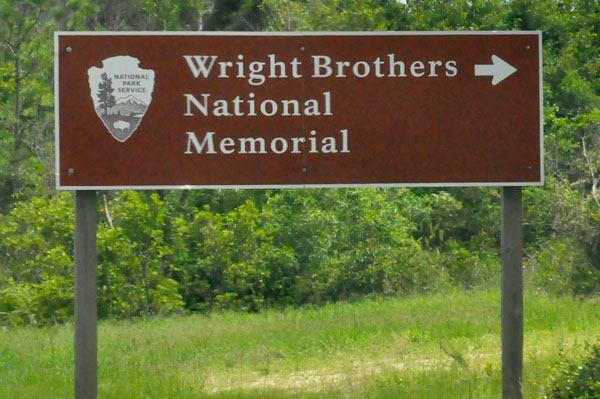 |
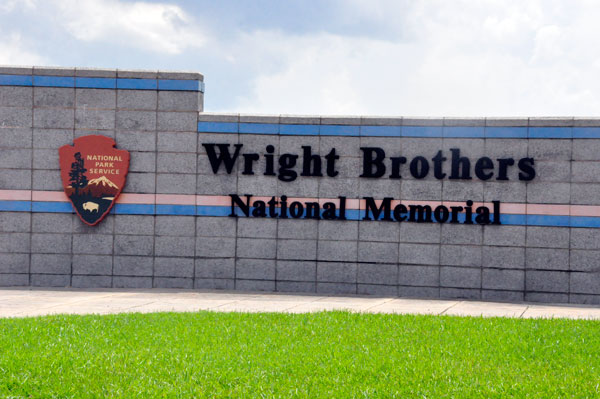 |
There is a charge to get in,
but they accepted the Two RV Gypsies' National Pass. On this date, the
park closed its gates at 5 p.m. (All dates, times and prices mentioned
on this website are always subject to change as time passes. The two
RV Gypsies have NO control over such items.) |
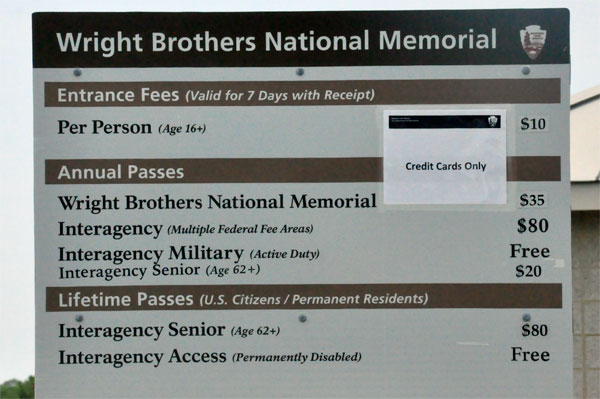 |
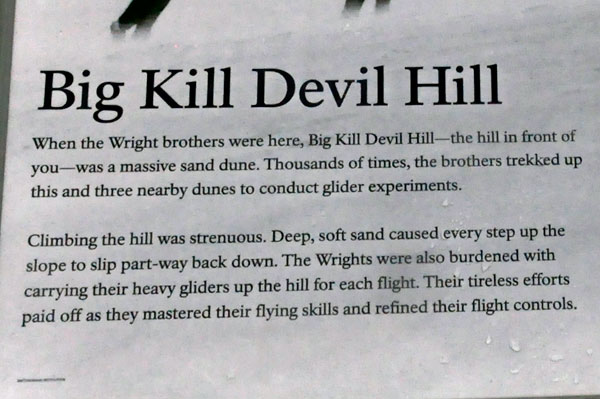 |
 Authorized
as Kill Devil Hill Monument on March 2, 1927, it was transferred from
the War Department to the National Park Service on August 10, 1933.
Congress renamed it and designated it a National Memorial on December
4, 1953. As with all historic areas administered by the National Park
Service, the National Memorial was listed on the National Register of
Historic Places on October 15, 1966. The memorial's visitor center (which
was closed on the date the Two RV Gypsies were here), was designed by
Ehrman Mitchell and Romaldo Giurgola, and designated a National Historic
Landmark on January 3, 2001. The memorial is co-managed with two other
Outer Banks parks, Fort Raleigh National Historic Site and Cape Hatteras
National Seashore. Authorized
as Kill Devil Hill Monument on March 2, 1927, it was transferred from
the War Department to the National Park Service on August 10, 1933.
Congress renamed it and designated it a National Memorial on December
4, 1953. As with all historic areas administered by the National Park
Service, the National Memorial was listed on the National Register of
Historic Places on October 15, 1966. The memorial's visitor center (which
was closed on the date the Two RV Gypsies were here), was designed by
Ehrman Mitchell and Romaldo Giurgola, and designated a National Historic
Landmark on January 3, 2001. The memorial is co-managed with two other
Outer Banks parks, Fort Raleigh National Historic Site and Cape Hatteras
National Seashore.
|
 |
The above photo was taken
By RGRAVIS - Own work, CC BY-SA 4.0, https://commons.wikimedia.org/w/index.php?curid=48577487
and permission to use it was on the website as long as credit was given
to RGravis. |
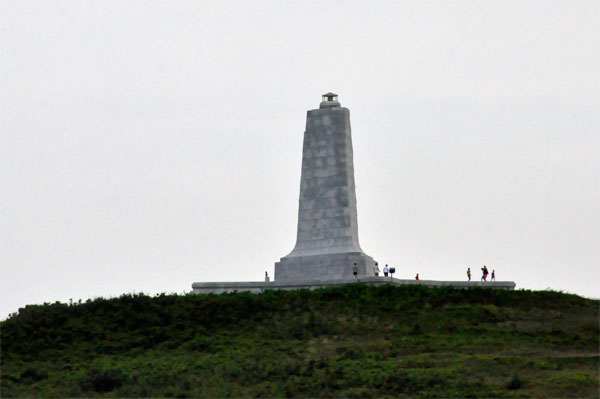 |
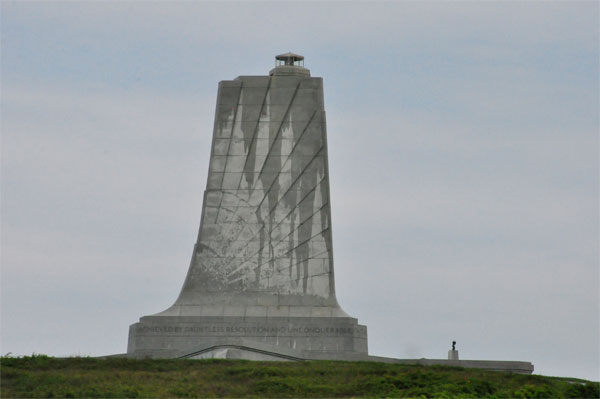 |
A 60 feet tall granite monument,
dedicated in 1932, is perched atop 90-foot-tall Kill Devil Hill, commemorating
the achievement of the Wright brothers. They conducted many of their
glider tests on the massive shifting dune that was later stabilized
to form Kill Devil Hill. Inscribed in capital letters along the base
of the memorial tower is the phrase "In commemoration of the conquest
of the air by the brothers Wilbur and Orville Wright conceived by genius
achieved by dauntless resolution and unconquerable faith." Atop the
tower is a marine beacon, similar to one found in a lighthouse. |
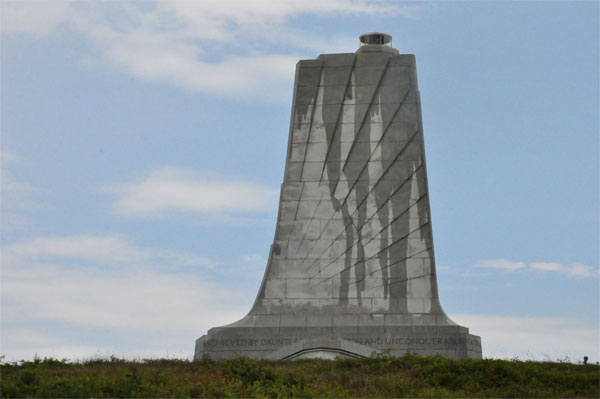 |
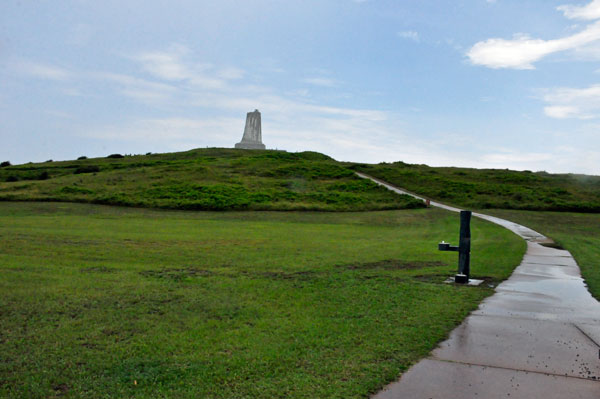 |
Below: Just as the Two RV
Gypsies started the long, uphill walk to the Wright Brothers National
Memorial Monument, it started to rain very hard. Everyone else scampered
down the hill to their cars, so they had the area to themselves. Lee
Duquette took partial shelter under the narrow ledge over the locked
doorway. Karen Duquette does not like umbrellas, so she did not care
if she got wet from the rain.
The doors of the tower are stainless steel over nickel, with a price
of $3,000 in 1928 (equivalent to $35,193 in 2018). The relief panels
represent the conquest of the air. |
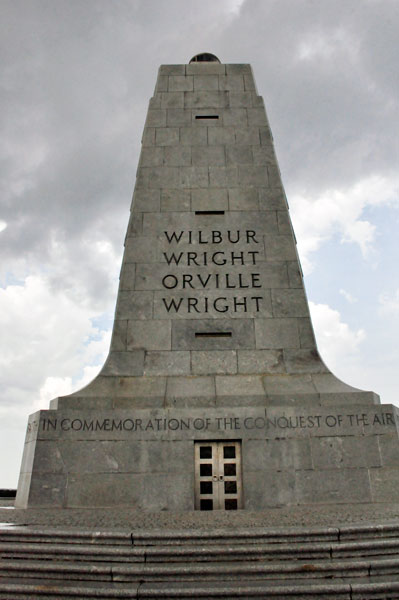 |
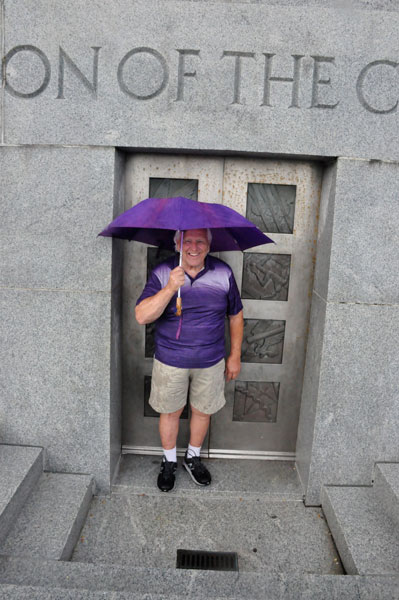 |
Below: When the rain stopped,
Karen Duquette photographed each of the two pillars beside the monument
of Wilbur and Orville Wright. |
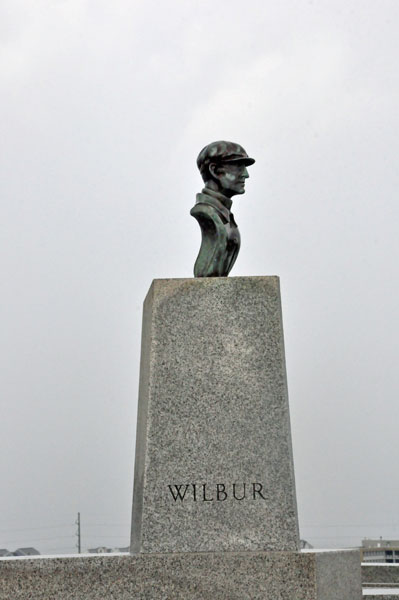 |
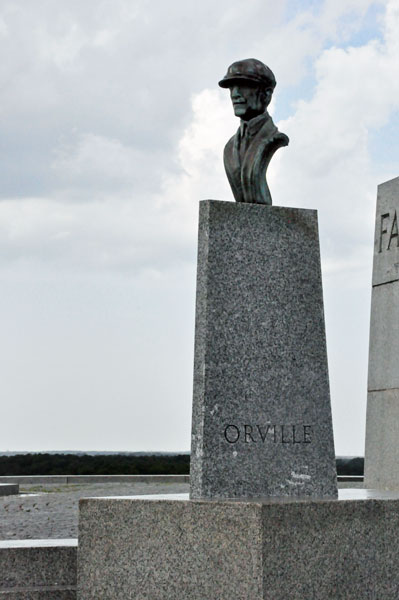 |
Below: Plaque on the
Pillar |
Below: Lee Duquette on the wet walkway
behind the monument |
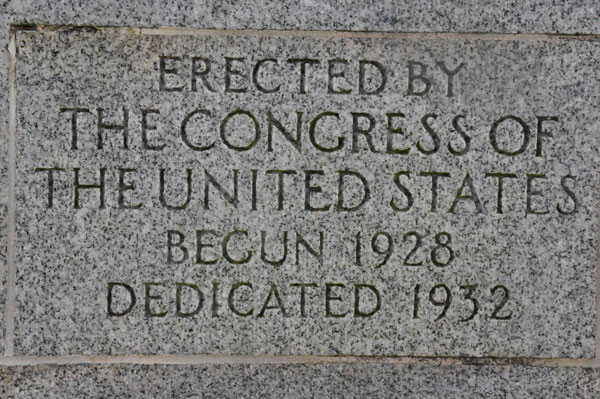 |
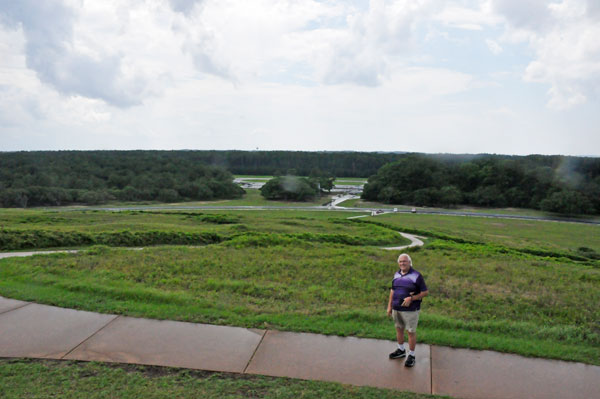 |
Below: Zoomed-in views from
the Monument |
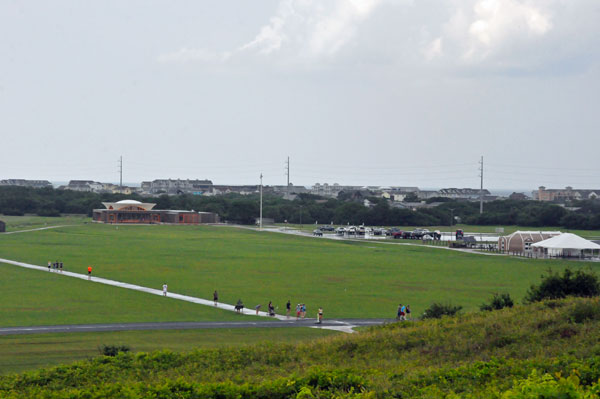 |
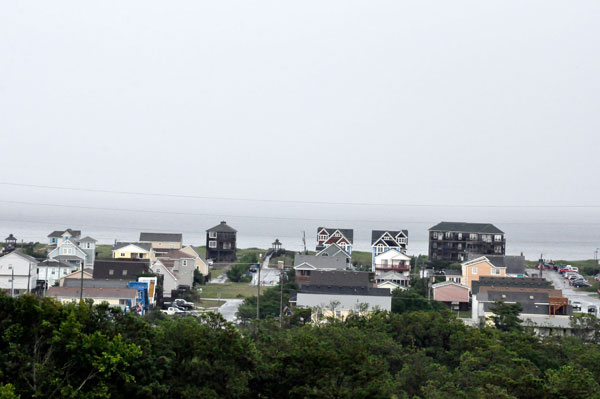 |
Below: A zoomed-in photo taken
from the Monument of The
Centennial of Flight, which is shown in closer details further
down this page. |
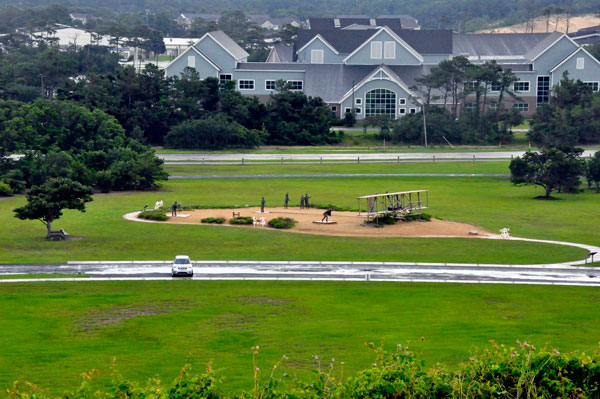 |
Below: Karen
Duquette at the Wilbur and Orville Wright Monument. The photos show
the size of the monument. |
 |
 |
Wordage inscribed around the
bottom of the tower - " In Commemoration of The Conquest of the
Air The Brothers Wilbur and Orville Wright Conceived by Genius, Achieved
by Dauntless resolution and unconquerable Faith." |
 |
 |
Below: Flowers
and a butterfly along the path on the walkway down from the monument. |
 |
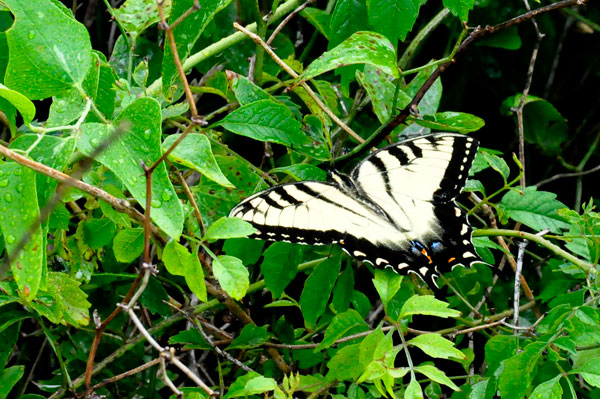 |
Below: Then Lee Duquette drove to the Centennial of Flight
monument as Karen Duquette took a last photo of the tower. |
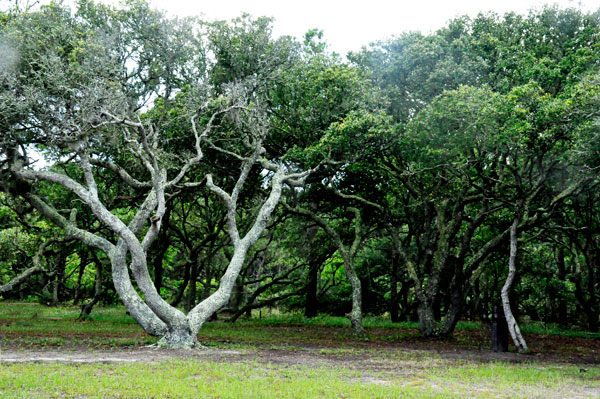 |
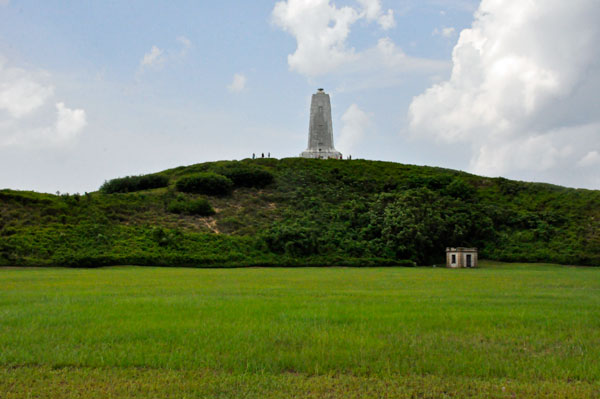 |
Below:
Centennial of Flight
|
 |
On December 17, 2003, the
Centennial of Flight was celebrated at the Park. The ceremony was hosted
by flight enthusiast John Travolta, and included appearances by President
George W. Bush, Neil Armstrong, Buzz Aldrin, and Chuck Yeager. The Centennial
Pavilion was built for the celebration and housed exhibits showing the
Outer Banks at the turn-of-the-century, the development of the 1903
replica, and NASA provided displays on aviation and flight. |
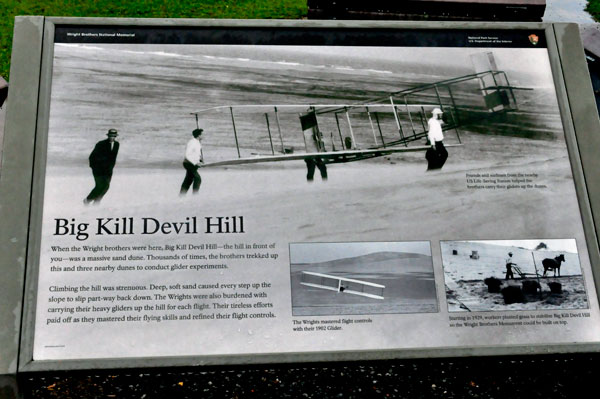 |
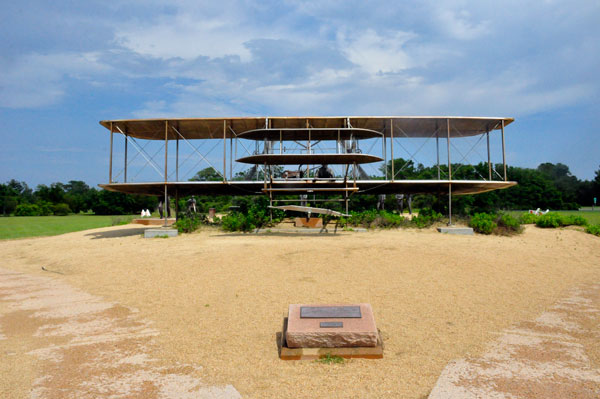 |
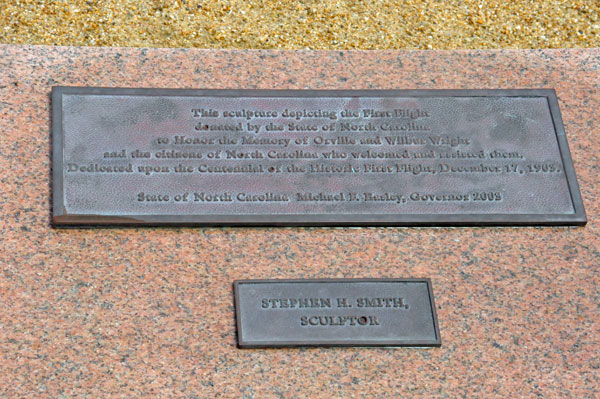 |
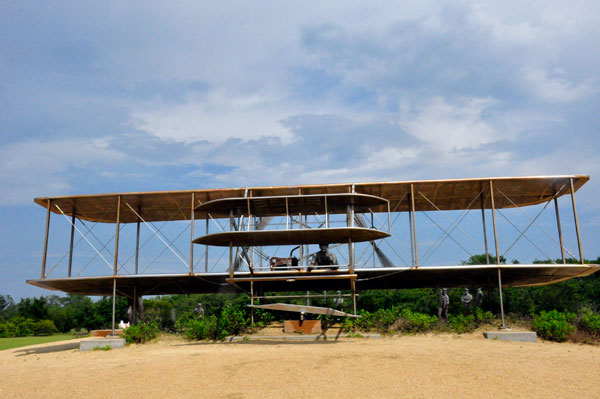 |
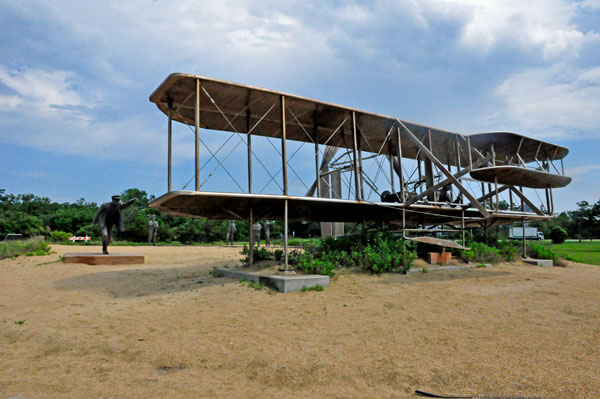 |
Below: Orville Wright piloted
the first flight on December 17, 1903 for 12 seconds, 120 feet. |
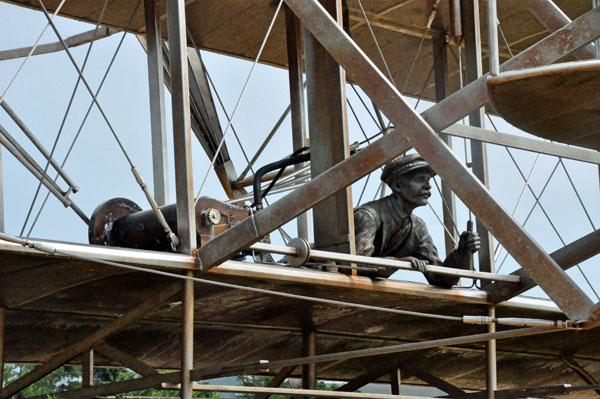 |
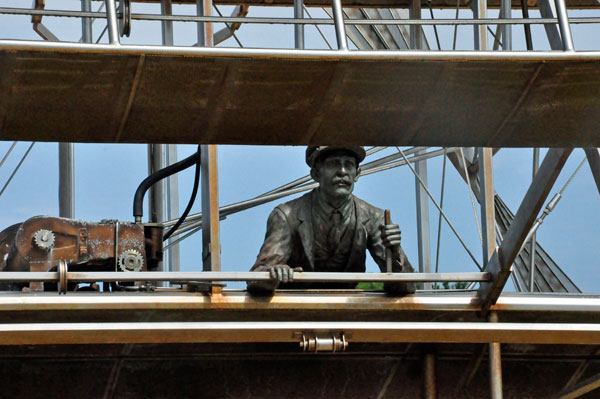 |
Sign showing the view from
behind the airplane, describing the statues in the pictures that Karen
Duquette took (shown further below). |
 |
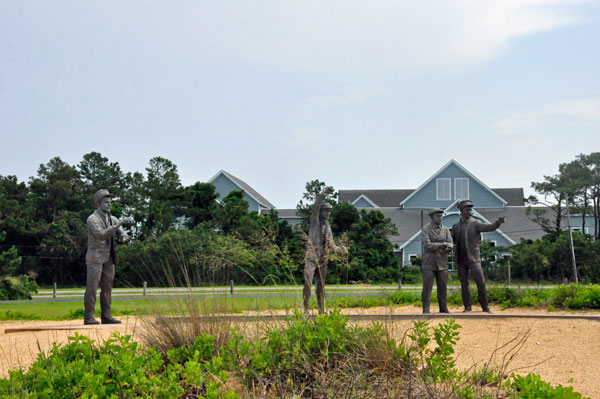 |
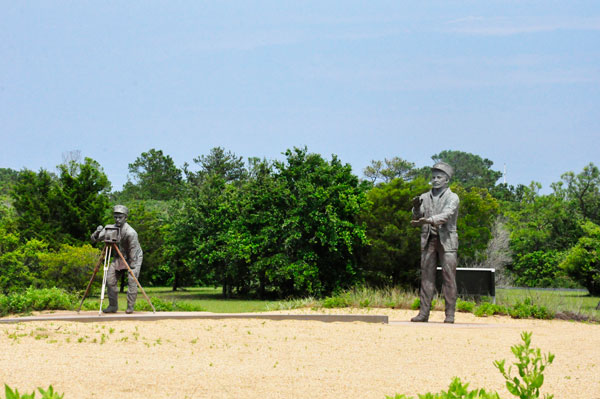 |
Below: John T. Daniels, a
member of the U.S. Life-Saving Service at Kill Devil Hill, took the
famous photograph of the Wright Brothers' first flight. |
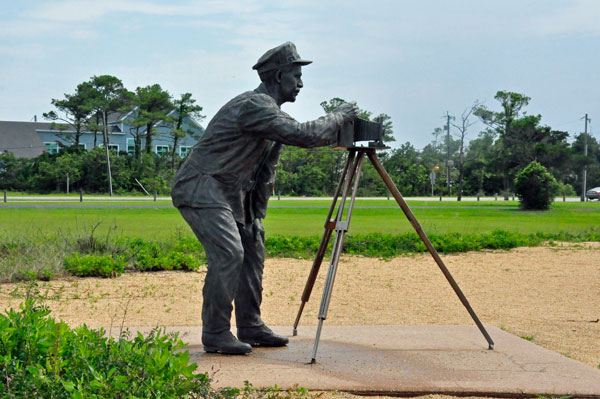 |
Below: W.C.
Brinkley, Adam Etheridge and Johnny Moore observed the flight. |
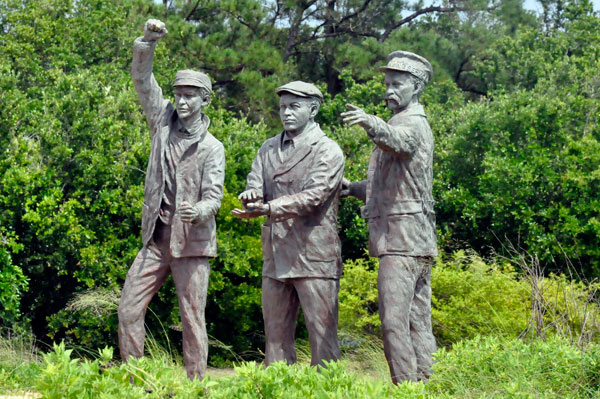 |
Below: The three pictures
below show Wilbur Wright as he straddled the wing, then let go as the
flyer lifted off. |
 |
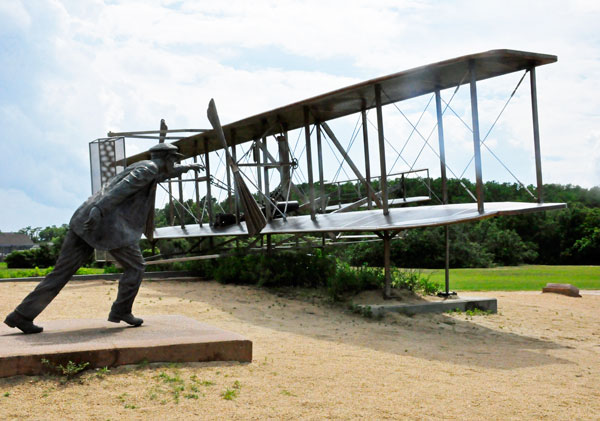 |
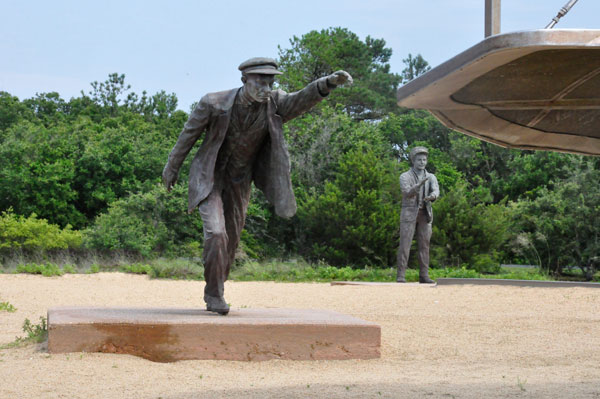 |
Due to the weather, Lee and
Karen Duquette, aka The Two RV Gypsies, did not walk the field nor visit
the replica of the hangar used by the Wright Brothers. It is possible
to walk along the actual routes of the four flights, with small monuments
marking their starts and finishes. Two wooden sheds, based on historic
photographs, recreate the world's first airplane hangar and the brothers'
living quarters. Maybe someday the they will return here. to visit the
replica of the hangar. |










































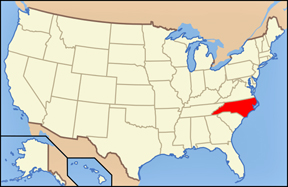


 Continue on in order to
Continue on in order to 























